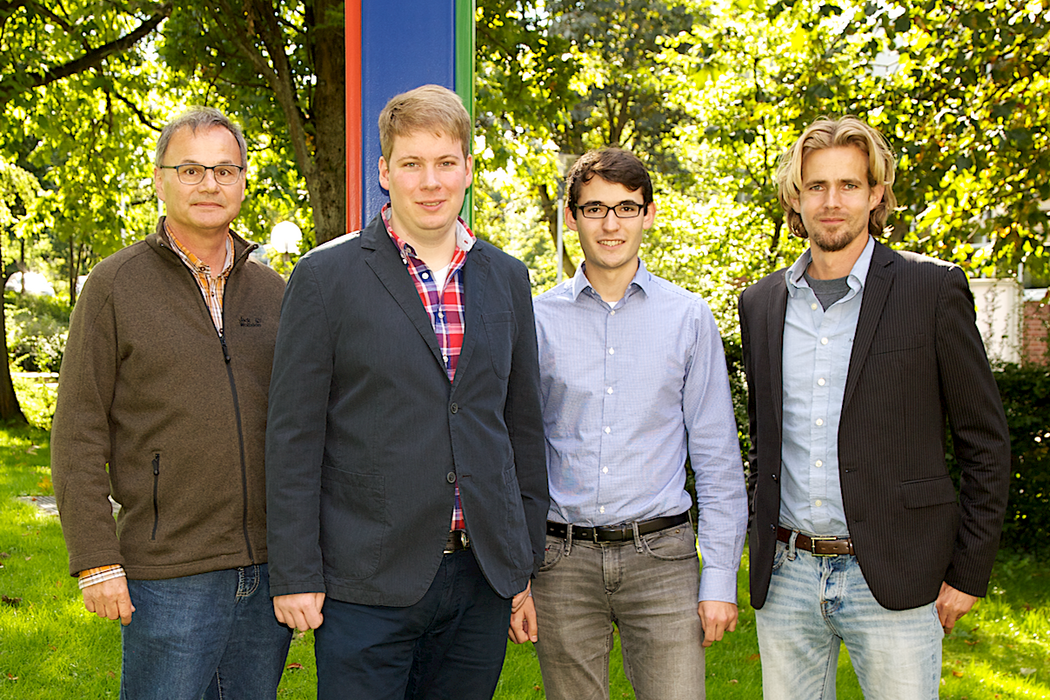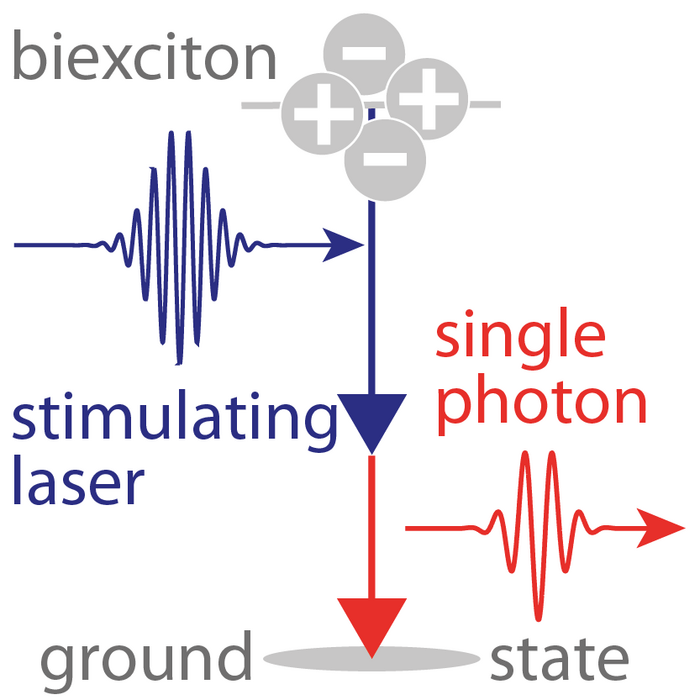Within the scope of the Collaborative Research Center TRR 142 “Tailored Nonlinear Photonics”, the research groups of Prof. Dr. Stefan Schumacher and Prof. Dr. Artur Zrenner (both of the Department of Physics, University of Paderborn) developed a novel semiconductor based source of single light particles (or photons) with tailored properties. In the proposed scheme, the properties of the single photon can be flexibly and all-optically controlled. Single light particles (or photons) play an important role in the secure communication of the future, the so-called quantum communication. Semiconductor quantum dots represent one of the best investigated and manageable sources for single photons. They enable the generation of single photons on demand. In previous studies these light particles were generated by emission from the lowest excited level of the quantum dot, the so-called “exciton”. “In our current study we present a completely new concept”, said Prof. Dr. Stefan Schumacher, supervisor of the present study. The novelty of this concept is that the single photon is generated by emission from a higher, doubly excited state, the so-called biexciton. For this, the direct emission of two photons from the biexciton is used. “At first glance it seems unnecessarily complicated to emit two photons just to generate a single photon”, said Stefan Schumacher, “but only this way are we able to make use of the complementary properties of the two photons. These are based on fundamental physical laws such as the conservation of energy- and angular momentum”. We fix the properties of one photon by stimulation of its emission with a laser pulse. Then, the properties of the second, spontaneously emitted photon, which is the photon of interest, are fully determined. This way, by simple adjustment of the properties of the stimulating laser, the properties of the single photon such as polarization, frequency and time of emission can be easily controlled and tailored to our wishes. “Therefore, we control the generation of single photons with light”, said Prof. Dr. Stefan Schumacher. This degree of flexibility and all-optical control of the properties of a single photon has not been achieved so far. In previous approaches the properties of the single photon were pre-determined and fixed by the semiconductor structure used. “Here, we are much more flexible”, completed M.Sc. Dirk Heinze, who is the first author and PhD student in this project. In their current work the authors present detailed theoretical results and computer simulations for this novel concept. The paper was published in Nature Communications and is available from the publisher’s site under the following link: http://www.nature.com/ncomms/2015/151005/ncomms9473/full/ncomms9473.html
Controlling light with light: How to generate a single photon with tailored properties


